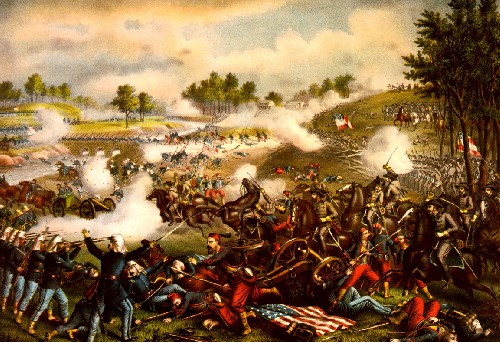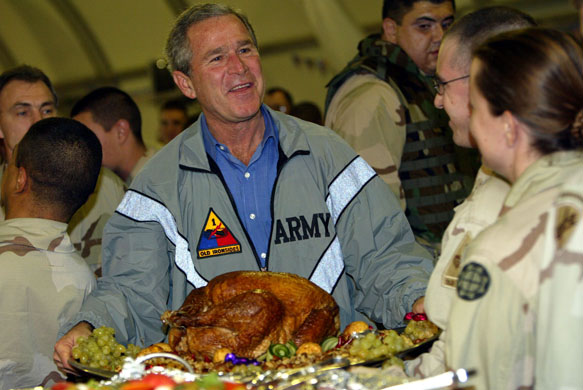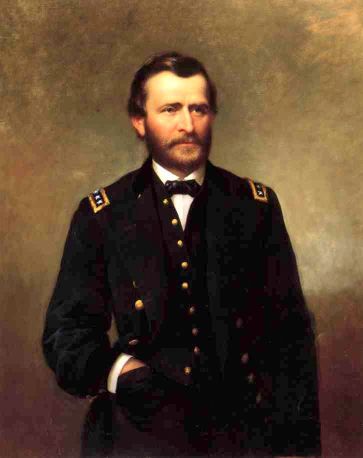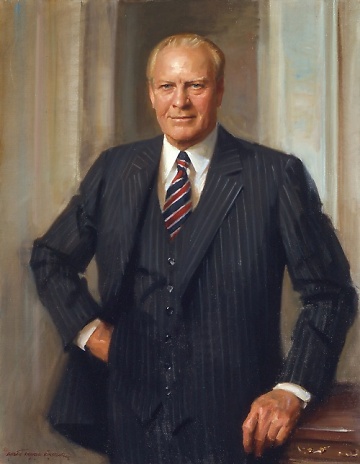
As it typically is with political history, there are many competing claims as to when the presidential tradition of "pardoning" a Thanksgiving turkey began. Some say the tradition dates back to the 1860s, when Abraham Lincoln's son Tad begged his dad to spare the life of a wild turkey named "Jack" that had been sent to the Lincolns to be part of their Christmas dinner.
Others claim that the tradition began during
Harry Truman's administration. Although it's true that the National Turkey Federation has been providing holiday turkeys to the White House since 1947, when Truman was in office, there's no evidence to prove that this story is true. This is what the
Truman Library says on the issue:
The Truman Library has received many requests over the years for information confirming the story that President Truman "pardoned" a Thanksgiving turkey in 1947, thus initiating a Presidential tradition that continues to this day.
The Library's staff has found no documents, speeches, newspaper clippings, photographs, or other contemporary records in our holdings which refer to Truman pardoning a turkey that he received as a gift in 1947, or at any other time during his Presidency. Truman sometimes indicated to reporters that the turkeys he received were destined for the family dinner table. In any event, the Library has been unable to determine when the tradition of pardoning the turkey actually began. While President John F. Kennedy spared a turkey's life on November 19, 1963, just days before his assassination, he didn't use the word "pardon." Instead, the bird had a sign hanging around its neck that read, "
GOOD EATING, MR. PRESIDENT!", which prompted Kennedy to quip, "Let's just keep him."
The first president to actually use the word "pardon" in reference to a holiday turkey was reportedly
Ronald Reagan, who deflected questions in 1987 about pardoning Oliver North in the Iran-Contra affair by joking that he would also pardon a turkey named "Charlie," who was already heading to a local petting zoo.
Which brings us to President
George H.W. Bush, who was apparently the first president to intentionally "pardon" a turkey. At the National Turkey Presentation Ceremony in 1989, Bush light-heartedly remarked to those assembled: "Let me assure you, and this fine tom turkey, that he will not end up on anyone's dinner table, not this guy - he's granted a Presidential pardon as of right now - and allow him to live out his days on a children's farm not far from here."
Although it's difficult to say with certainty exactly
when this White House tradition began, we do know
where some of the more recently pardoned turkeys have been sent after receiving their presidential reprieves. From 1989 until 2004, the fortunate fowls were sent to live out their natural lives at Frying Pan Farm in Virginia.
The venue changed in 2005, however, when Disneyland was celebrating its fiftieth anniversary. That year, a lucky turkey named "Marshmallow," and his alternate, "Yam," were taken by police escort to the airport and then flown first class to California. According to the
Associated Press:
Marshmallow became the Grand Marshal of Disneyland's Thanksgiving parade, and the sign above his float read "The Happiest Turkey on Earth." The turkeys then retired to a coop at the park's Big Thunder Ranch, where three of the pardoned birds...still live. Florida's Disney World got the birds from 2007, when they arrived on a United Airlines flight that was renamed "Turkey One."This year, the venue will change yet again. Instead of being sent to
Disneyland, the 21-week-old turkey that President Obama will pardon this Wednesday will be sent to live out the rest of his life at George Washington's
Mount Vernon Estate in Virginia. Upon its arrival at Mount Vernon, he will reportedly "be driven to his pen in a horse-drawn carriage and be greeted with a trumpet fanfare."
A spokeswoman for Mount Vernon said that it's appropriate that the turkey will go to Washington's home since he was the first president to issue a
Thanksgiving Proclamation, and the Washingtons also raised and ate wild turkeys at Mount Vernon.
Although the spokeswoman didn't say how the Washington's preferred to serve their Thanksgiving birds, the Mount Vernon Inn does offer a daily lunch menu that includes a "
Colonial Turkey Pye" which is described as "a turkey stew served with mixed vegetables and topped with a homemade buttermilk biscuit."
While it might be difficult to obtain a copy of that particular recipe, you can try this quick and simple recipe for
Turkey Pot Pie if you need something to do with your leftover turkey this Thanksgiving:
1 sheet frozen puff pastry
1 egg, beaten
1/2 cup milk
2 (11-ounce) cans condensed Cheddar cheese soup
2 (10 3/4-ounce) cans cream of celery soup
1 large turkey skinned, cooked, boned and cubed
2 medium onions, diced
2 cup cooked butternut squash, diced
2 cup cranberries
Salt and pepper
Preheat oven to 350 degrees F. To make the crust, dust surface with flour. Cut 1 sheet of frozen puff pastry into 1-inch strips, 8 inches long. On a large cookie sheet, weave strips into a lattice large enough to cover each pot pie. Mix egg and milk together and brush onto each lattice square. Bake for 5 minutes. Dough will rise and turn light golden brown. Set aside until ready to assemble pies. In a large saucepan heat the soups. Stir in turkey, onion, squash, cranberries, salt and pepper. Bring mixture to a boil. In an oven-proof dish, fill with mixture and top with the pre-cooked lattice square. Bake for 5 minutes until bubbly and puff pastry is deep golden brown.
FAST FACT: According to recent
news reports, two turkeys boarded a United Airlines flight dubbed "Turkey One" departing from San Francisco to Washington D.C. last Friday. The birds were named Apple and Cider by California schoolchildren "who submitted 200 suggestions to the White House." The gobblers reportedly checked into "a private room at the W Hotel in Washington - carpeted in wood chips - and will feast on room-service corn feed until National Turkey Federation CEO...Yubert Envia delivers the plump 40-pounders to the Rose Garden," where President Obama will offer his official pardon the day before Thanksgiving!
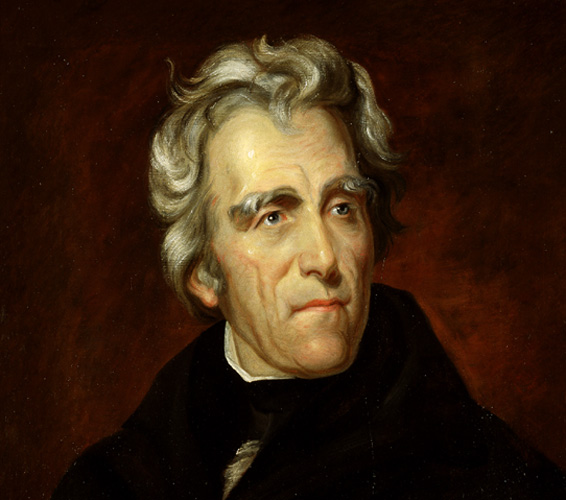 Andrew Jackson was so strong-willed that his political enemies dubbed him King Andrew I, portraying him as a tyrannical ruler who abused presidential powers and trampled on the constitution. During his two terms of office, Jackson vetoed the recharter of the Second Bank of the United States, signed the “Tariff of Abominations” which led to the Nullification Crisis and ignored important Supreme Court decisions protecting Native American rights.
Andrew Jackson was so strong-willed that his political enemies dubbed him King Andrew I, portraying him as a tyrannical ruler who abused presidential powers and trampled on the constitution. During his two terms of office, Jackson vetoed the recharter of the Second Bank of the United States, signed the “Tariff of Abominations” which led to the Nullification Crisis and ignored important Supreme Court decisions protecting Native American rights. 



